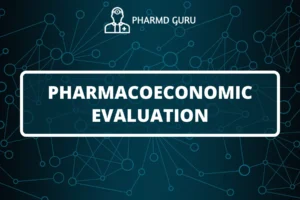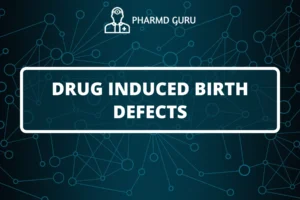Pharmacoepidemiology is a field that focuses on studying the utilization and effects of medications in large populations. It combines principles from epidemiology and pharmacology to evaluate the safety and effectiveness of drugs in real-world settings. One of the essential tools in pharmacoepidemiology is the case report, which plays a crucial role in identifying and understanding adverse drug reactions, drug interactions, and other medication-related issues. In this article, we will explore the significance of case reports in pharmacoepidemiology and how they contribute to the overall understanding of drug safety and effectiveness.
SCROLL DOWN TO THE BOTTOM OF THIS PAGE FOR ACTUAL NOTES.
TABLE OF CONTENTS:
- Introduction: Understanding Pharmacoepidemiological Methods
- The Importance of Case Reports in Pharmacoepidemiology
- Structure and Components of a Case Report
- Reporting Adverse Drug Reactions (ADRs)
- Identifying New Drug Interactions
- Evaluating Drug Utilization Patterns
- Benefits and Limitations of Case Reports in Pharmacoepidemiology
- Case Reports vs. Randomized Controlled Trials (RCTs)
- Enhancing Case Reporting through Pharmacovigilance Programs
- Case Report Quality Assessment
- The Role of Pharmacoepidemiology in Public Health
- Case Reports and Regulatory Agencies
- Case Reports and Clinical Decision-Making
- Future Directions and Advancements in Case Reporting
1. Introduction: Understanding Pharmacoepidemiological Methods
Pharmacoepidemiology is a multidisciplinary field that involves the study of drug utilization, effects, and outcomes in real-world populations. It provides valuable insights into the benefits and risks associated with medications, helping healthcare professionals make informed decisions about prescribing and patient care. By analyzing data from large-scale databases, researchers can identify potential safety concerns, drug interactions, and other important factors that may affect medication use.
2. The Importance of Case Reports in Pharmacoepidemiology:
Case reports are critical in pharmacoepidemiology as they serve as valuable sources of information regarding the effects and adverse events associated with specific medications. They often provide early signals of potential safety issues or unexpected drug interactions that may not have been captured during clinical trials. Case reports play a vital role in generating hypotheses and identifying patterns that can later be explored through more extensive studies.
3. Structure and Components of a Case Report:
A case report typically consists of several key components, including:
Title and Abstract:
The title of the case report should be concise and descriptive, summarizing the main issue or finding. The abstract provides a brief overview of the case, highlighting the key points and findings.
Introduction:
The introduction provides background information about the patient, the drug involved, and the reason for reporting the case. It sets the context for the subsequent sections.
Case Description:
This section provides a detailed description of the patient’s medical history, the drug administered, dosage, and duration of use. It also includes information about the adverse event or reaction experienced.
Discussion:
The discussion section analyzes the case in the context of existing literature and discusses possible mechanisms or explanations for the observed outcomes. It may also highlight any similarities or differences with previous case reports.
Conclusion:
The conclusion summarizes the main findings of the case report and may offer recommendations for future research or clinical practice.
4. Reporting Adverse Drug Reactions (ADRs):
One of the primary uses of case reports in pharmacoepidemiology is the reporting of adverse drug reactions (ADRs). ADRs are unintended and harmful responses to medications. Case reports provide valuable information about the occurrence and characteristics of ADRs in real-world settings. By collecting and analyzing data from multiple case reports, researchers can identify potential safety concerns associated with specific drugs or drug classes. This information is crucial for healthcare providers and regulatory agencies to make informed decisions regarding drug safety and prescribing practices.
5. Identifying New Drug Interactions:
Case reports also play a significant role in identifying new drug interactions. Drug interactions occur when two or more medications interact with each other, altering their effectiveness or causing adverse effects. These interactions may not have been discovered during clinical trials, as they often involve specific patient populations or unique combinations of drugs. Case reports provide valuable insights into previously unknown drug interactions, helping healthcare professionals better understand the risks and implications of medication combinations.
6. Evaluating Drug Utilization Patterns:
Understanding how drugs are utilized in real-world populations is essential for assessing their effectiveness and safety. Case reports contribute to the evaluation of drug utilization patterns by documenting real-life experiences of patients taking specific medications. They provide valuable data on dosages, treatment durations, and off-label use, helping researchers and healthcare professionals gain insights into prescribing practices and potential issues related to drug utilization.
7. Benefits and Limitations of Case Reports in Pharmacoepidemiology:
Case reports offer several benefits in the field of pharmacoepidemiology. They provide early signals of potential safety concerns, contribute to hypothesis generation, and offer insights into rare or unusual adverse events. Case reports can also guide clinical decision-making and support the development of pharmacovigilance programs. However, it’s important to note that case reports have limitations. They rely on individual experiences and may not be representative of the entire population. Additionally, the data collected in case reports are often anecdotal and subject to bias. Therefore, they should be considered as a starting point for further investigation rather than definitive evidence.
8. Case Reports vs. Randomized Controlled Trials (RCTs):
While randomized controlled trials (RCTs) are considered the gold standard for evaluating the safety and effectiveness of medications, they have limitations. RCTs often have strict inclusion criteria, limiting the generalizability of their findings to real-world populations. On the other hand, case reports provide valuable insights into medication use in diverse patient populations and can identify rare or unexpected adverse events. Both case reports and RCTs complement each other in pharmacoepidemiology, with case reports serving as a valuable source of real-world evidence that can guide further research and inform clinical decision-making.
9. Enhancing Case Reporting through Pharmacovigilance Programs:
Pharmacovigilance programs play a crucial role in enhancing case reporting and monitoring the safety of medications. These programs involve the systematic collection, analysis, and evaluation of adverse drug reactions. By promoting the reporting of cases, pharmacovigilance programs help uncover previously unknown safety concerns and improve patient safety. Healthcare professionals and patients are encouraged to report any suspected adverse events associated with medications to their local pharmacovigilance systems.
10. Case Report Quality Assessment:
To ensure the reliability and validity of case reports, certain criteria can be used to assess their quality. These criteria include clear and accurate reporting of the case, appropriate documentation of the adverse event or reaction, consideration of alternative explanations, and adherence to ethical guidelines. Peer-review processes and standardized reporting guidelines, such as the CARE (CAse REport) guidelines, can help maintain the quality of case reports in pharmacoepidemiology.
11. The Role of Pharmacoepidemiology in Public Health:
Pharmacoepidemiology plays a crucial role in public health by providing important insights into medication safety and effectiveness on a population level. By studying large datasets and utilizing pharmacoepidemiological methods, researchers can identify trends, patterns, and potential risks associated with medications. This information is invaluable for public health agencies and policymakers in making informed decisions regarding drug regulation, drug utilization, and patient safety. Pharmacoepidemiology contributes to the overall goal of improving population health outcomes by ensuring that medications are used safely and effectively.
12. Case Reports and Regulatory Agencies:
Regulatory agencies, such as the Food and Drug Administration (FDA) in the United States, play a critical role in monitoring the safety of medications. Case reports provide essential information to regulatory agencies, helping them identify potential safety concerns and take appropriate actions. In some cases, the findings from case reports have led to label changes, medication recalls, or restrictions on drug use. The collaboration between pharmacoepidemiologists, healthcare professionals, and regulatory agencies is crucial in ensuring the ongoing safety and monitoring of medications.
13. Case Reports and Clinical Decision-Making:
Case reports influence clinical decision-making by providing healthcare professionals with real-world evidence and insights into the effects and risks associated with specific medications. While individual case reports should not be considered definitive evidence, they can guide clinicians in understanding potential adverse events or drug interactions that may occur in their patients. Case reports can also raise awareness about rare or underreported side effects, allowing healthcare professionals to be more vigilant and proactive in monitoring patients’ medication use.
14. Future Directions and Advancements in Case Reporting:
As technology and data collection methods continue to advance, the field of pharmacoepidemiology and case reporting will also evolve. Electronic health records, data mining techniques, and artificial intelligence will contribute to the generation of larger datasets and more comprehensive analyses. The integration of genomic information and personalized medicine approaches may further enhance the understanding of medication effects and individualized treatment responses. Furthermore, collaborations between researchers, healthcare providers, and patients will continue to strengthen case reporting systems and improve the overall quality and impact of pharmacoepidemiological research.
ACTUAL NOTES:




